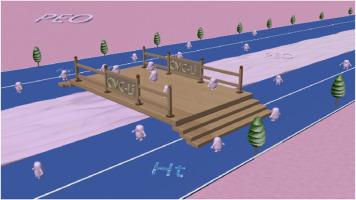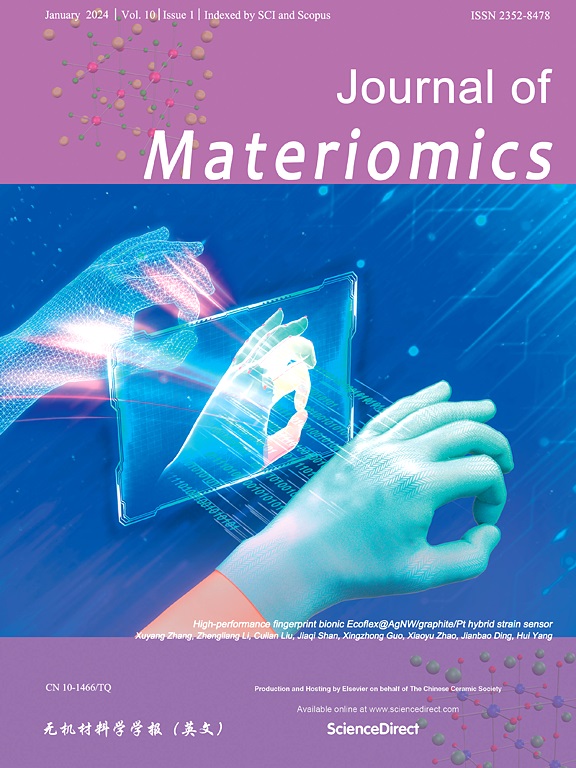Enhancing Li-ion transport by creating continuous channels and improving the decomposition of lithium salts in composite polymer electrolytes
IF 8.4
1区 材料科学
Q1 CHEMISTRY, PHYSICAL
引用次数: 0
Abstract
With the merits of both solid polymer electrolytes (SPEs) and inorganic ceramic electrolytes (ICEs), composite polymer electrolytes (CPEs) prepared by coupling polymer matrix with inorganic fillers are broadly utilized in solid lithium metal batteries (SLMBs). However, CPEs fabricated by a single filler with polymer matrix often exhibit unsatisfactory performance. Here, prepared by coupling poly (ethylene oxide) (PEO) matrix with a natural additive carboxymethyl cellulose lithium (CMC-Li) and an inorganic filler mineral hectorite (Ht), an efficient CPE is reported. Detailedly, CMC-Li is considered to act as a “bridge”, which connects the Ht nanosheets distributed in PEO, thus establishing continuous Li+ transmission channels. Ht with a nanolayers structure vividly acts as “bricks”, pave the way for ion transference. In addition, oxygen atoms in CMC-Li contribute to adequately dissociating lithium salts, hydrogen bonding generated by hydroxyl groups is propitious to anchor anions to increase the Li+ transference number. Under the synergistic effect brought by CMC-Li and Ht, the electrolyte membrane PEO-10%Ht-4%CMC-Li (PHCL, in mass fraction) displays a high Li+ transfer number (0.73) and exceptional Li+ conductivity at 25 °C (2.5 × 10−4 S/cm). Our work demonstrates a powerful mean to fabricate the efficient electrolyte membrane for SLMBs.

通过在复合聚合物电解质中创建连续通道和改善锂盐分解来增强锂离子传输
凭借固体聚合物电解质(SPE)和无机陶瓷电解质(ICE)的优点,聚合物基体与无机填料耦合制备的复合聚合物电解质(CPE)在固体锂金属电池(SLMB)中得到了广泛应用。然而,由单一填料与聚合物基体制成的 CPE 通常表现出不尽人意的性能。本文报道了一种通过将聚(环氧乙烷)(PEO)基体与天然添加剂羧甲基纤维素锂(CMC-Li)和无机填料矿物蛭石(Ht)耦合制备的高效 CPE。具体来说,CMC-Li 被视为 "桥梁",将分布在 PEO 中的 Ht 纳米片连接起来,从而建立起连续的 Li+ 传输通道。具有纳米层结构的 Ht 就像 "砖块 "一样,为离子传输铺平了道路。此外,CMC-Li 中的氧原子有助于充分解离锂盐,羟基产生的氢键有利于锚定阴离子,从而增加 Li+ 的传输数量。在 CMC-Li 和 Ht 的协同作用下,PEO-10%Ht-4%CMC-Li(PHCL,以质量分数计)电解质膜显示出较高的锂+转移数(0.73),并在 25 °C 时具有优异的锂+电导率(2.5 × 10-4 S/cm)。我们的工作为制造 SLMB 的高效电解质膜提供了有力的手段。
本文章由计算机程序翻译,如有差异,请以英文原文为准。
求助全文
约1分钟内获得全文
求助全文
来源期刊

Journal of Materiomics
Materials Science-Metals and Alloys
CiteScore
14.30
自引率
6.40%
发文量
331
审稿时长
37 days
期刊介绍:
The Journal of Materiomics is a peer-reviewed open-access journal that aims to serve as a forum for the continuous dissemination of research within the field of materials science. It particularly emphasizes systematic studies on the relationships between composition, processing, structure, property, and performance of advanced materials. The journal is supported by the Chinese Ceramic Society and is indexed in SCIE and Scopus. It is commonly referred to as J Materiomics.
 求助内容:
求助内容: 应助结果提醒方式:
应助结果提醒方式:


